Jimmie Durham
03 Nov 2017 - 28 Jan 2018

Jimmie Durham, Self-Portrait Pretending to Be a Stone Statue of Myself, 2006. Color photograph. Edition of 1 + 1 AP. 31 3⁄4 × 24 in. (80.7 × 60.9 cm). Collection of fluid archives, Karlsruhe. Courtesy of ZKM Center for Art and Media, Karlsruhe.
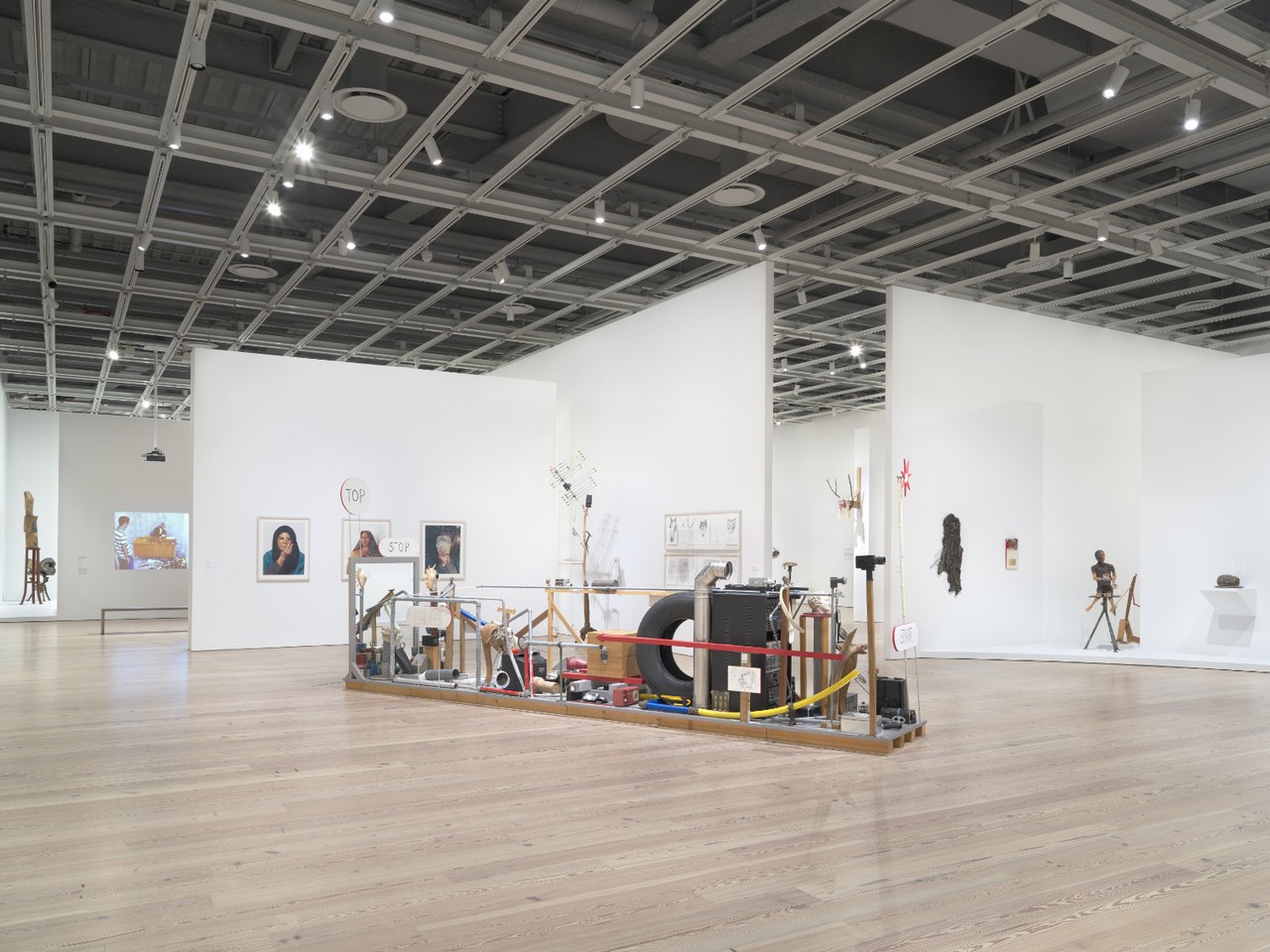
Installation view of Jimmie Durham: At the Center of the World (Whitney Museum of American Art, New York, November 3, 2017–January 28, 2018). From left to right: The Forest and Brancusi, 2012; Elephant Skull Study #2, 2012; Smashing, 2004; Self-Portrait Pretending to be Maria Thereza Alves, 1995-2006; Self-Portrait Pretending to be Rosa Levy, 1994; Self-Portrait Pretending to be a Stone Statue of Myself, 2006; Something...Perhaps a Fugue or an Elegy, 2005; The Bluebird of Happiness and the Miner’s Canary (Classic Rock), 2008; Drawn Lines and Faces, 1998; Three Faces, 1998; Over the River and Through the Woods, 1989; Confessional, 2006; Wahlverwandtschaften [Elective affinities], 1992; Jesus (Es geht um die Wurst) [Jesus (It’s all about the sausage)], 1992; Untitled (It’s Got Mr. Durham’s Teeth), 1992; Head, 2006. Photograph by Ron Amstutz
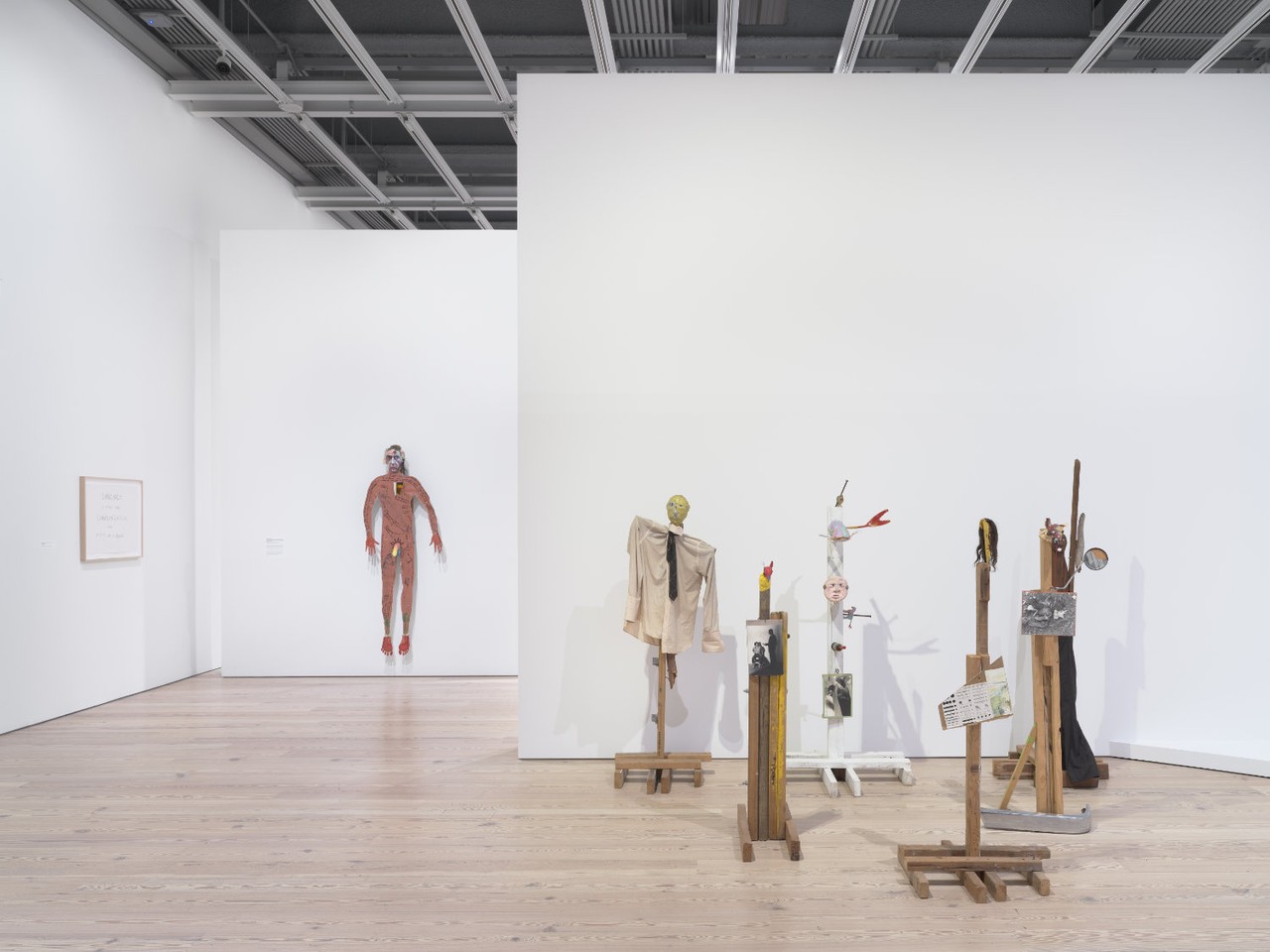
Installation view of Jimmie Durham: At the Center of the World (Whitney Museum of American Art, New York, November 3, 2017–January 28, 2018). From left to right: Language is a tool for communication, like a city, or a brain, 1992; Self-portrait, 1986; Ahead, 1991; Untitled (Armadillo), 1991; Untitled, 1991; Half Off, 1991; Raccoon (Skunk), 1989. Photograph by Ron Amstutz
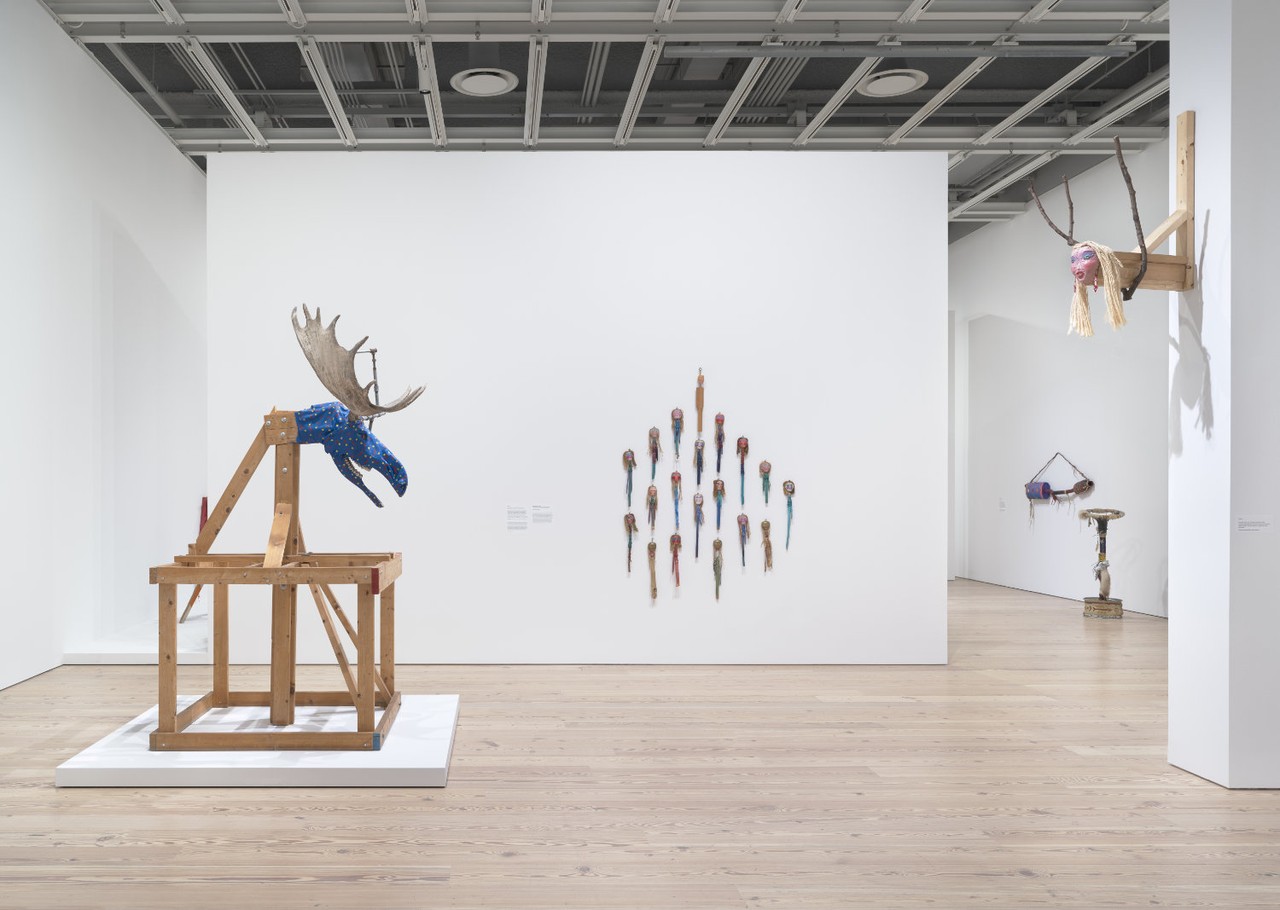
Installation view of Jimmie Durham: At the Center of the World (Whitney Museum of American Art, New York, November 3, 2017–January 28, 2018). From left to right: The Cathedral of St. John the Divine in Manhattan is the World’s Largest Gothic Cathedral. Except, of course, that it is a fake; first by the simple fact of being built in Manhattan, at the turn of the century. But the stone work is also re-inforced with steel which is expanding with rust. Someday it will destroy the stone. The Cathedral is in Morningside Heights over-looking a panoramic view of Harlem which is separated by a high fence, 1989; New Clear Family, 1989; Bedia’s Muffler, 1985; Bedia’s Stirring Wheel, 1985; Over the River and Through the Woods, 1989. Photograph by Ron Amstutz
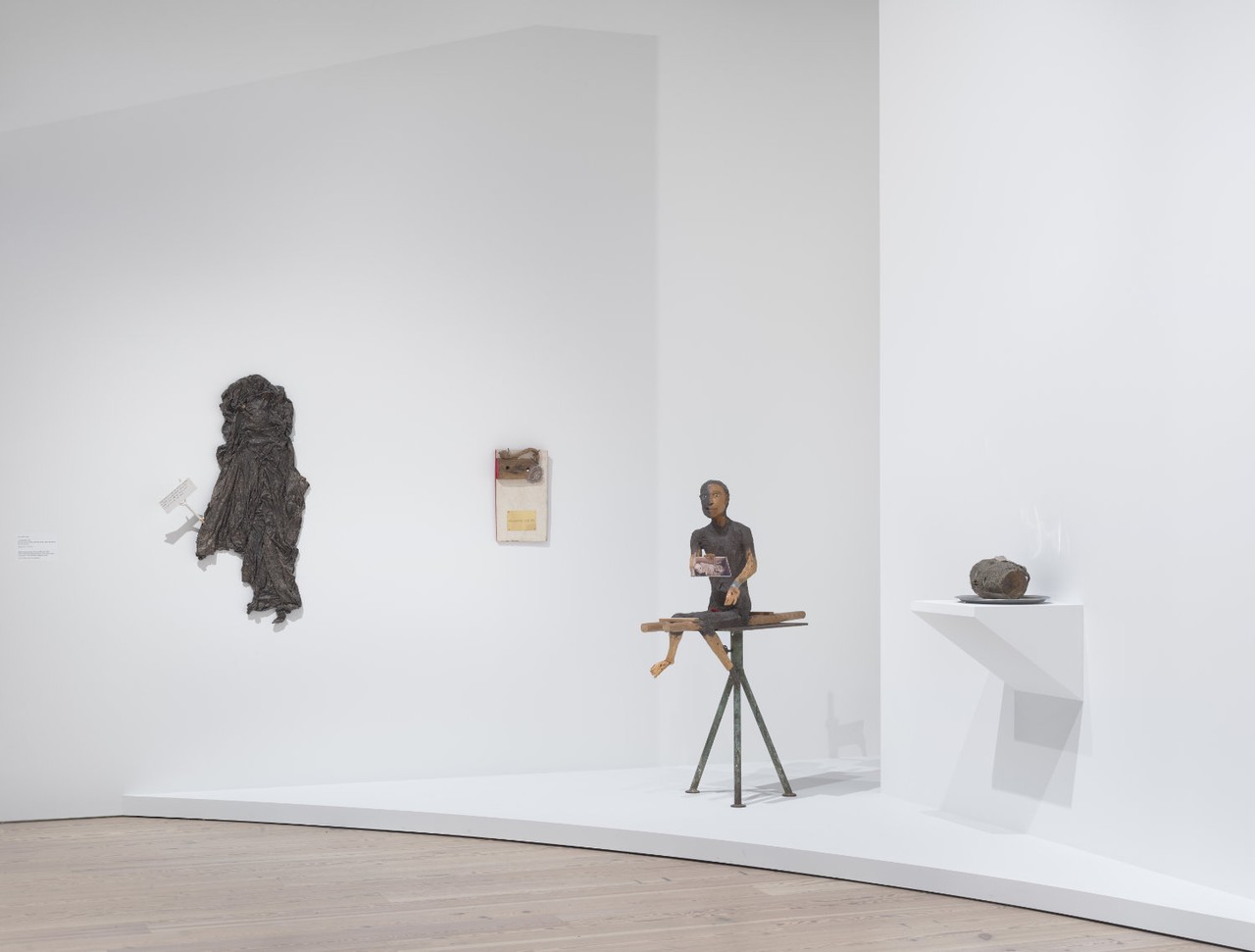
Installation view of Jimmie Durham: At the Center of the World (Whitney Museum of American Art, New York, November 3, 2017–January 28, 2018). From left to right: Confessional, 2006; Wahlverwandtschaften [Elective affinities], 1992; Jesus (Es geht um die Wurst) [Jesus (It’s all about the sausage)], 1992; Head, 2006. Photograph by Ron Amstutz

Jimmie Durham (b. 1940), THE FREE AND THE BRAVE, 2017 (installation view, Whitney Museum of American Art). Metal-pipe scaffolding, custom-printed PVC mesh, bricks, plastic buckets, and cement mixer. Collection of the artist; courtesy kurimanzutto, Mexico City. Photograph by Ron Amstutz
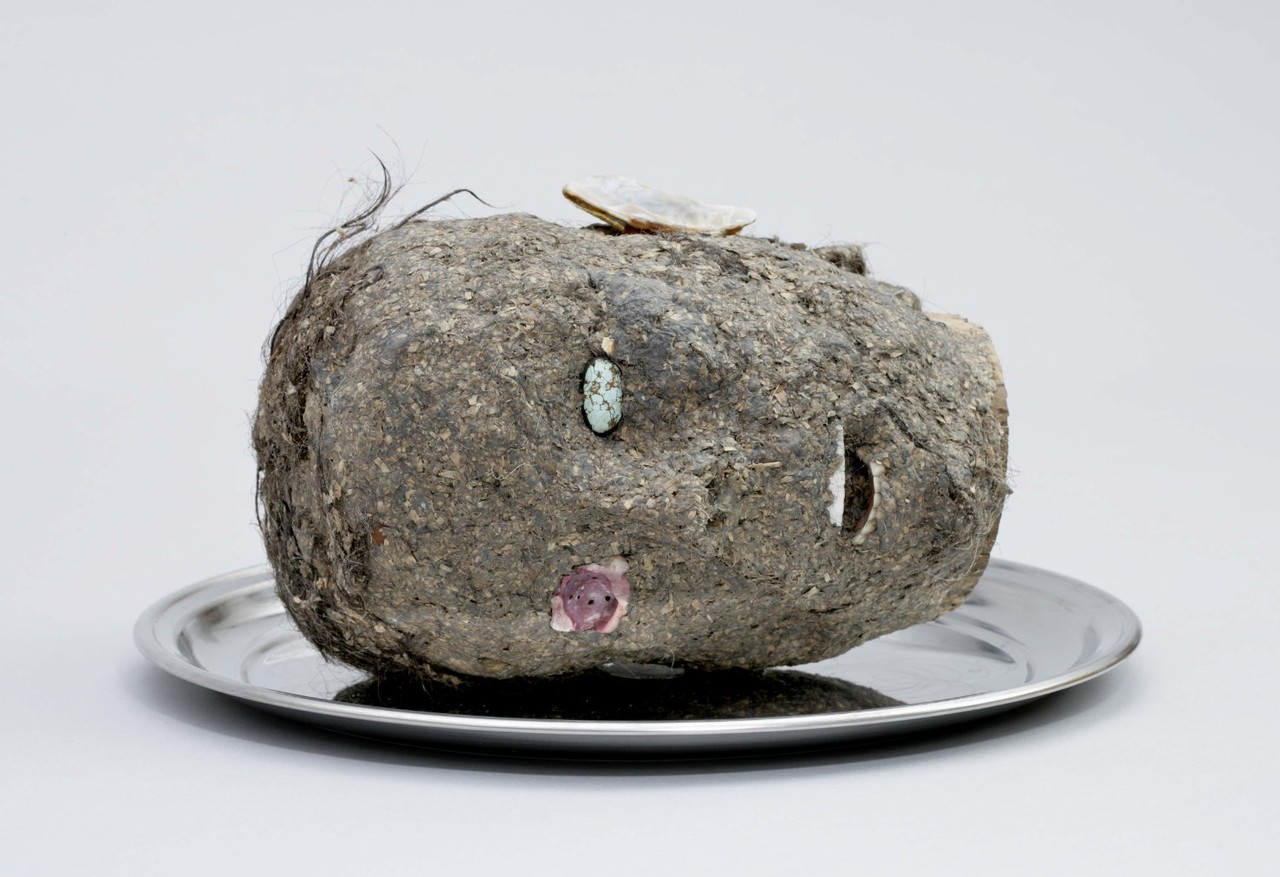
Jimmie Durham, Head, 2006. Wood, papier-mâché, hair, seashell, turquoise, metal tray. 10 × 16 × 16 in. (25 × 40 × 40 cm). Fondazione Morra Greco, Naples, Italy. Image courtesy of kurimanzutto, Mexico City.
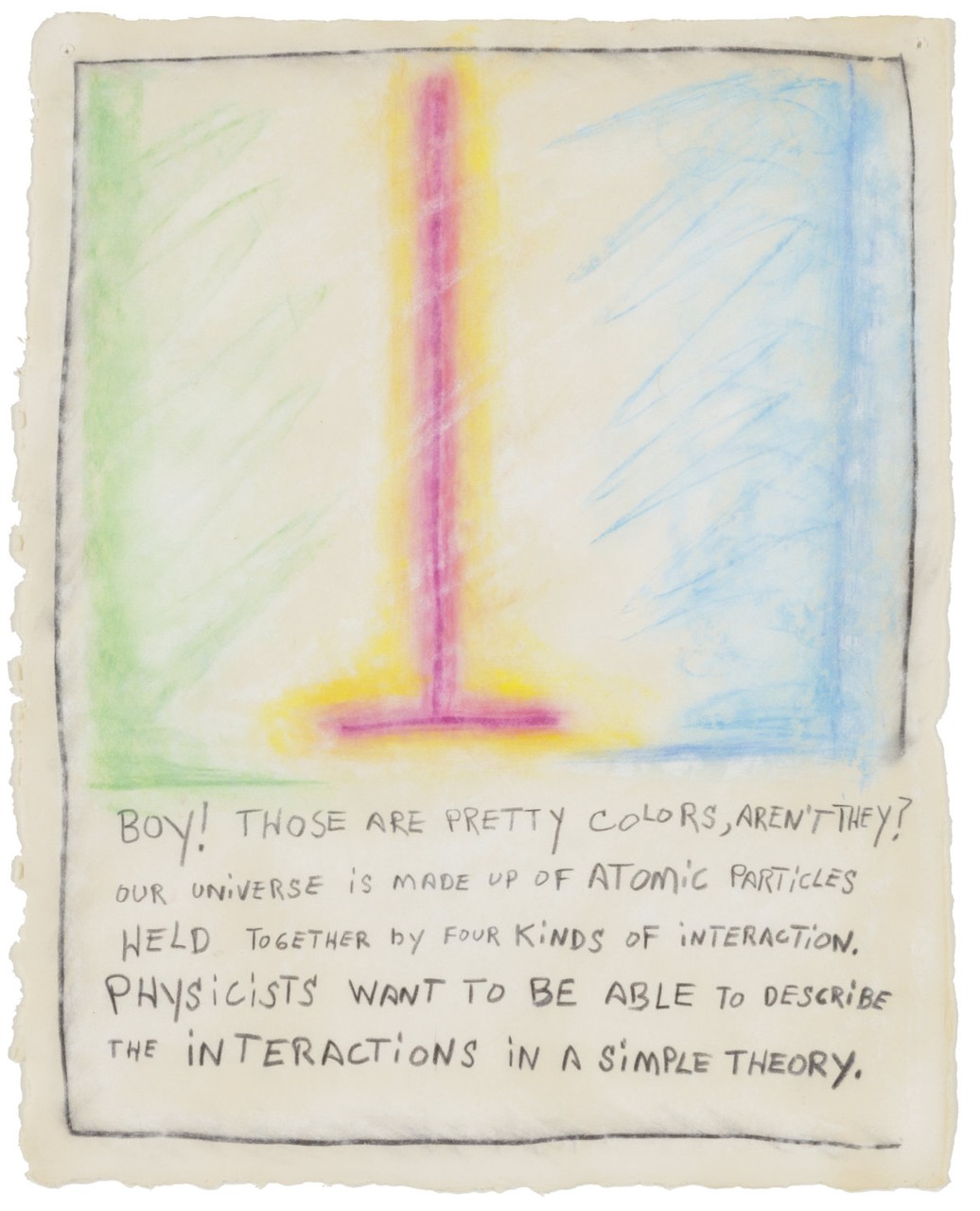
Jimmie Durham, Science II, 1990. Dry pastels and pencil on paper. 20 × 16 in. (50.8 × 40.6 cm). Courtesy of the artist and kurimanzutto, Mexico City.
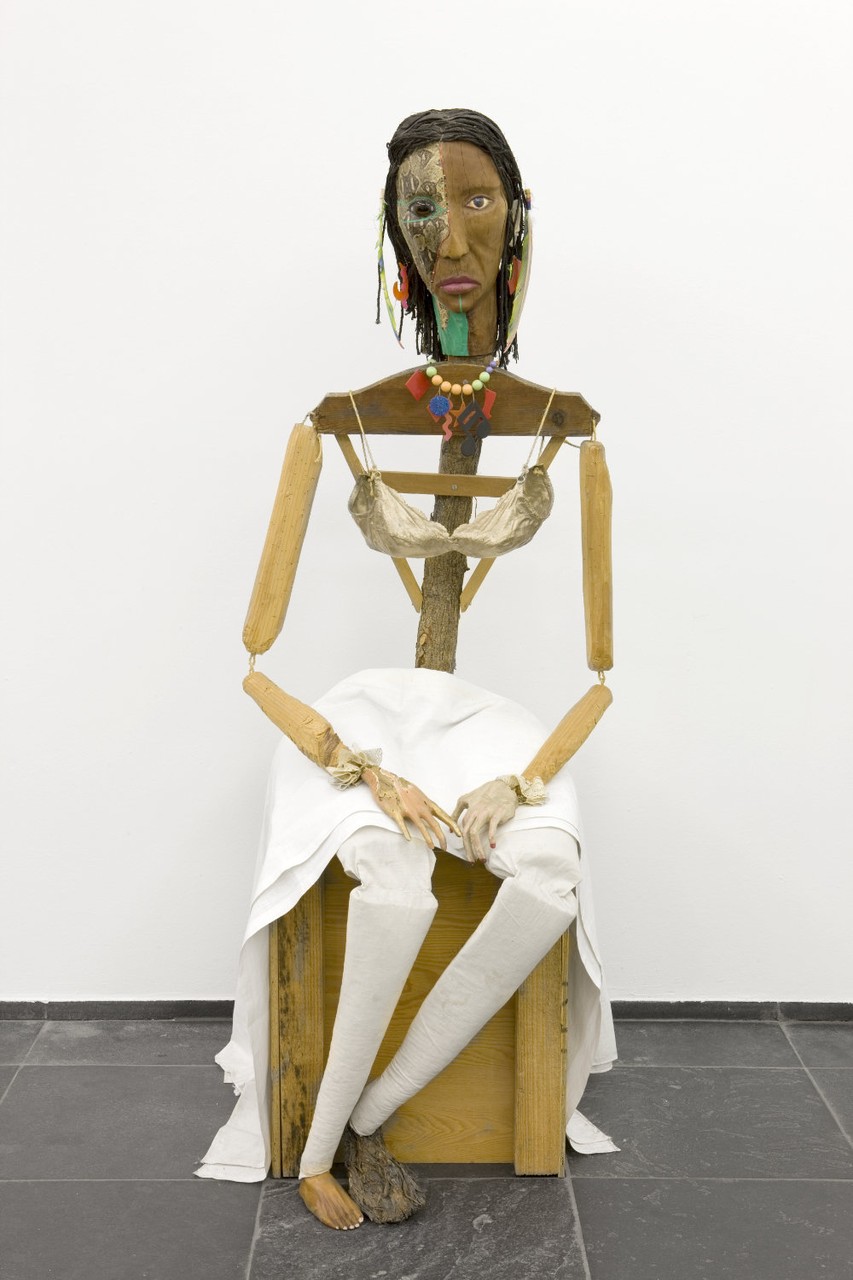
Jimmie Durham, Malinche, 1988-1992. Guava, pine branches, oak, snakeskin, , polyester bra soaked in acrylic resin and painted gold, watercolor, cactus leaf, canvas, cotton cloth, metal, rope, feathers, plastic jewelry, glass eye. 70 × 23 5⁄8 × 35 in. (177 × 60 × 89 cm). Stedelijk Museum voor Actuele Kunst (SMAK), Ghent, Belgium. Image ©S.M.A.K. / Dirk Pauwels.

Jimmie Durham, Ahead, 1991. Pine, black walnut, metal, cotton shirt, tie, fiberglass, resin. 65 × 23 3⁄4 × 25 1⁄2 in. (165 × 60 × 65 cm). Private collection, courtesy of kurimanzutto, Mexico City. Photo: Nick Ash.
JIMMIE DURHAM
At the Center of the World
3 November 2017– 28 January 2018
Curated by Anne Ellegood
Artist and activist Jimmie Durham (b. 1940) has worked as a visual artist, performer, essayist, and poet for more than forty-five years. A political organizer for the American Indian Movement during the 1970s, he was an active participant in the downtown New York City artistic community in the 1980s. In 1987 he moved to Cuernavaca, Mexico, then to Europe in 1994, where he has lived ever since. Predominantly a sculptor, Durham often combines found objects and natural materials and incorporates text to expose Western-centric views and prejudices hidden in language, objects, and institutions. Calling himself an "interventionist," Durham is oftentimes critical in his analysis of society but with a distinctive wit that is simultaneously generously humorous.
Durham's expansive practice spans sculpture, drawing, collage, photography, video, and performance, and the exhibition includes close to 175 objects dating from 1970 to the present. It is accompanied by a catalogue comprising several scholarly essays, an interview with the artist, a chronology, and a selection of Durham's own writings, both old and new. The first North American retrospective of Durham's work, At the Center of the World traces his remarkable attentiveness to materials and characteristic approach to assemblage while demonstrating his commitment to shedding light on the complexities of historical narratives, notions of authenticity, and the borders and boundaries that try to contain us.
Jimmie Durham: At the Center of the World is organized by the Hammer Museum, Los Angeles, and curated by Anne Ellegood, senior curator, with MacKenzie Stevens, curatorial assistant. The installation at the Whitney Museum is overseen by Elisabeth Sussman, Sondra Gilman Curator of Photography, and Laura Phipps, assistant curator, Whitney Museum of American Art.
At the Center of the World
3 November 2017– 28 January 2018
Curated by Anne Ellegood
Artist and activist Jimmie Durham (b. 1940) has worked as a visual artist, performer, essayist, and poet for more than forty-five years. A political organizer for the American Indian Movement during the 1970s, he was an active participant in the downtown New York City artistic community in the 1980s. In 1987 he moved to Cuernavaca, Mexico, then to Europe in 1994, where he has lived ever since. Predominantly a sculptor, Durham often combines found objects and natural materials and incorporates text to expose Western-centric views and prejudices hidden in language, objects, and institutions. Calling himself an "interventionist," Durham is oftentimes critical in his analysis of society but with a distinctive wit that is simultaneously generously humorous.
Durham's expansive practice spans sculpture, drawing, collage, photography, video, and performance, and the exhibition includes close to 175 objects dating from 1970 to the present. It is accompanied by a catalogue comprising several scholarly essays, an interview with the artist, a chronology, and a selection of Durham's own writings, both old and new. The first North American retrospective of Durham's work, At the Center of the World traces his remarkable attentiveness to materials and characteristic approach to assemblage while demonstrating his commitment to shedding light on the complexities of historical narratives, notions of authenticity, and the borders and boundaries that try to contain us.
Jimmie Durham: At the Center of the World is organized by the Hammer Museum, Los Angeles, and curated by Anne Ellegood, senior curator, with MacKenzie Stevens, curatorial assistant. The installation at the Whitney Museum is overseen by Elisabeth Sussman, Sondra Gilman Curator of Photography, and Laura Phipps, assistant curator, Whitney Museum of American Art.
